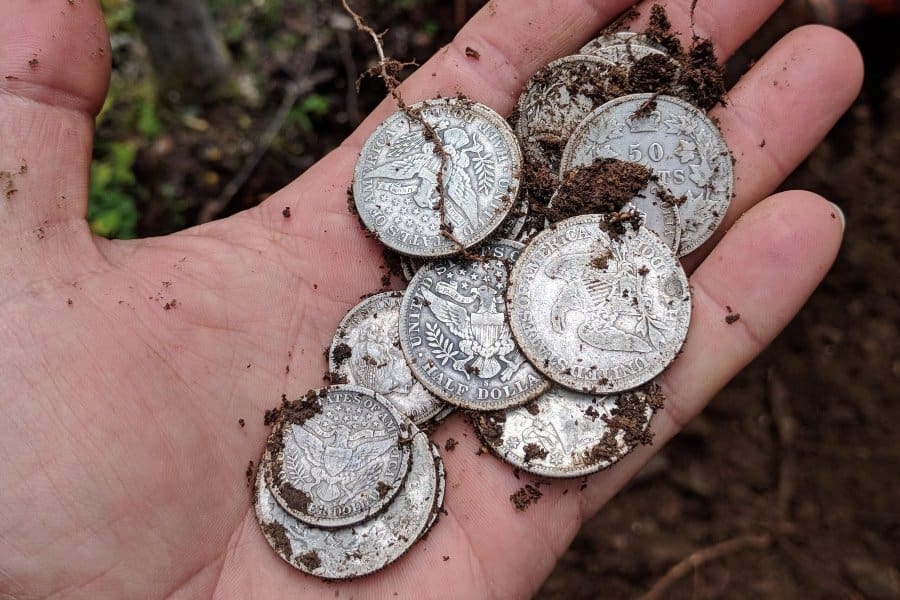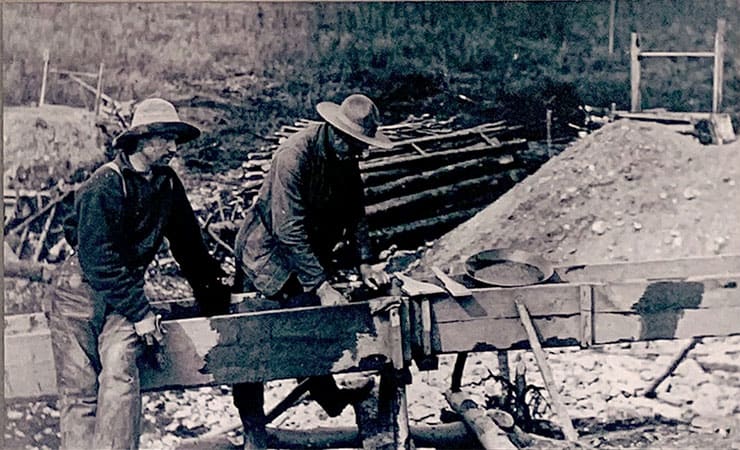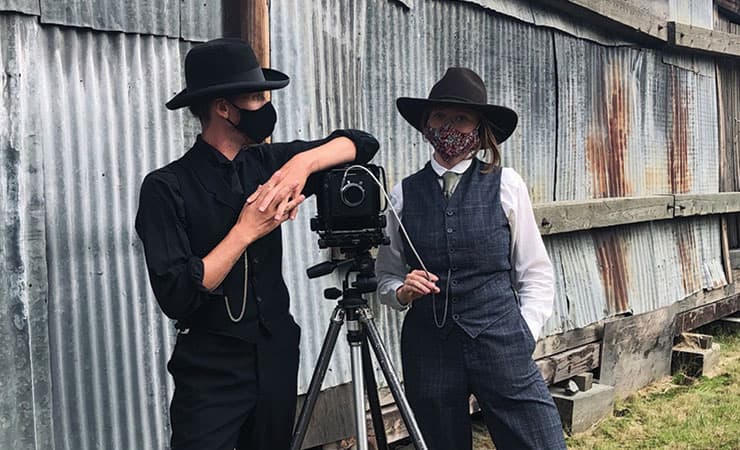Dalton’s Gold Rush Trail is a story of journeys; the 10-year journey of Jack Dalton to blaze a trail to the Klondike gold fields, and the 40-year journey of author Michael Gates to retrace those steps in southwest Yukon.
Like the pioneer, “Michael shares Dalton’s own determination and concise, clear thinking,” said local author Ellen Davignon at the launch of the newest addition to the Lost Moose collection published by Harbour Publishing.
Gates presents his personal history-hunting journey in short interludes between chapters of Dalton history, a combination of academic research, interviews with First Nations and descendants of stampeders, along with excerpts from a cattle driver’s diary.
On an early expedition into Dalton country, Gates learned that, “You reach your destination in a roundabout fashion. That trip is as important as the arrival.”
As a result of the historian’s on-the-ground research methods, readers get insight into the cultural differences of stampeders and First Nations in such things as use of fire and maps, and opposing notions of fair dealing.
“History is not a single story, but many,” says Gates.
As for Klondike scholars or historians who may never have set foot in the Yukon, Gates finds they often lack a sense of place.
“If they haven’t been in the Yukon and felt the wind, rain, and biting cold, or cursed the mosquitoes as they toiled along an isolated trail with a heavy pack, their writing lacks authenticity.”
By revealing the “hidden histories” Gates found that several facts that held sway for decades were outright false.
“Our tradition, especially with Gold Rush history, is a British/Anglo framework,” he explains.
“Dalton’s story is a prime example of American Manifest Destiny. Both were condescending to the inhabitants of the ‘new land’ they had ‘discovered’.”
However without the contribution of First Nations, central and northern Europeans, French, Asians and blacks, the North would have developed quite differently.
Gates pins the lack of attention to these histories on prevailing power structures.
“Schools, for example, are often victims of interest groups, so they tend to present a set of facts designed to confirm a certain story. History in that framework isn’t dynamic, such as what we see with First Nation elders who work to preserve, and add to, history.”
Even today, this lack of attention affected Dalton’s route to publication.
Over the years, Gates pitched the manuscript to several publishers and twice to Howard White at Harbour Publishing. The prime reason for rejection, says Gates, was that “it’s really hard to sell a book about something so few know anything about.”
After he had established a name for himself at Harbour they accepted the Trail manuscript.
The story, which covers the period from 1895 to 1905, is distilled from source material Gates organized in a database he developed. It’s over 250 pages long and still growing.
“Whenever I thought I’d found out all I could know, something else came up,” he says.
For example, a photo of cattle pens at Pyramid Harbour led to discovery of the album it came from. And Gates’ research into the First World War led to the discovery of the Tuxford diary detailing a cattle drive from Moose Jaw, Saskatchewan, to Fort Selkirk [see “Looking Back”, What’s Up Yukon June 7, 2012].
“There came a point where I reached a critical mass of information. There may be more, but I knew that I had enough to make a significant statement and advance the knowledge about the Dalton Trail.”
By the end of his journey, Gates learned “One person can make a difference to preserve history.”




